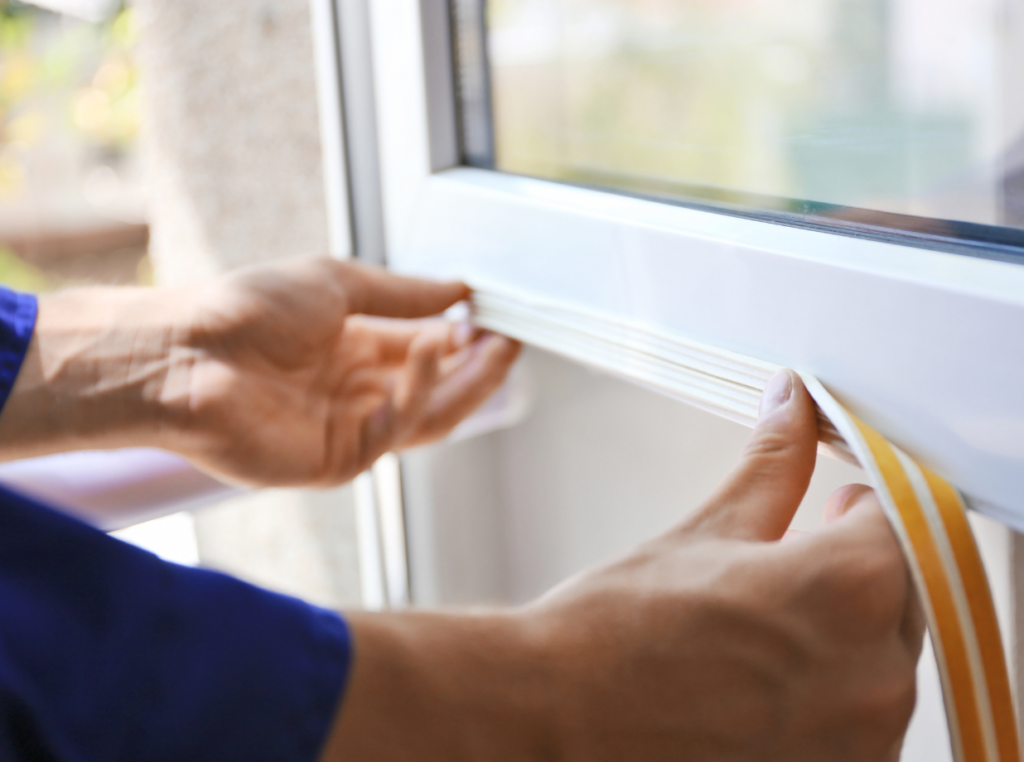Securing one’s home is a fundamental concern for many individuals and families.
While the front door and windows often receive the most attention, there are numerous other potential entry points that can compromise the overall security of a residence. Identifying and sealing these often-overlooked vulnerabilities is crucial in creating a comprehensive and effective home security strategy.
Homeowners must be vigilant in assessing the various access points throughout their property, from the basement to the attic, and from the garage to the utility connections.
By addressing these potential weak spots, they can significantly reduce the risk of unauthorized entry and enhance the overall safety and protection of their living space.
This article will delve into the specific areas that require attention and provide practical solutions for fortifying these sneaky entry points, empowering readers to take control of their home’s security.
Key Takeaways
- Securing your home’s vulnerabilities is essential for keeping your family and belongings safe.
- Fortify basement doors and windows to prevent unauthorized access to your home’s foundation.
- Guard garage entrances to prevent intruders from gaining easy access to your home.
- Seal attic vents and openings to prevent pests and intruders from entering through the overhead access points.
- Block chimneys and fireplaces to prevent unwanted entry and maintain home safety.
Basement Doors and Windows: Fortifying the Foundation
The basement, often considered the foundation of a home, can also be a vulnerable access point for intruders. Basement doors and windows, if not properly secured, can provide an easy entry point for burglars. Homeowners must carefully assess the security of these access points and implement effective measures to reinforce them.
When evaluating the security of basement doors and windows, homeowners should consider the strength of the locks, the integrity of the frames, and the overall condition of the entry points. Sturdy, high-quality locks, such as deadbolts or reinforced strike plates, can significantly enhance the security of basement doors.
Additionally, reinforcing the door frames with metal or composite materials can make it more difficult for intruders to force their way in. For basement windows, the installation of window film or laminated glass can help deter break-ins and prevent easy access.
By addressing the security of basement doors and windows, homeowners can create a formidable barrier against potential intruders, ensuring that the foundation of their home remains a secure and impenetrable fortress.
Garage Entrances: Guarding the Gateway
The garage, often seen as a convenient access point, can also be a significant vulnerability in a home’s security system. Garage doors and side entrances can provide easy access for burglars if not properly secured. Homeowners must be vigilant in recognizing and addressing the security risks associated with these entry points.
Garage doors, particularly older or manual models, can be susceptible to forced entry. Upgrading to an automatic garage door opener with advanced security features, such as rolling codes or encrypted signals, can significantly enhance the protection of this access point.
Additionally, installing motion sensors or security cameras near the garage can help deter and detect any suspicious activity. For side entrances, homeowners should ensure that the doors are equipped with sturdy locks, reinforced frames, and, if possible, a secondary locking mechanism, such as a deadbolt or a security bar.
By implementing these strategies, homeowners can transform their garage from a potential vulnerability into a well-guarded gateway, effectively deterring and preventing unauthorized access to their homes.
Attic Vents and Openings: Sealing the Overhead Access
The attic and roof area of a home can also present security risks if not properly addressed. Attic vents, skylights, and other openings can serve as potential entry points for intruders. Homeowners must be vigilant in identifying and sealing these overhead access points to maintain a secure living environment.
Attic vents, often overlooked, can provide a convenient entry point for burglars. Homeowners should consider installing sturdy, tamper-resistant vent covers or screens to prevent unauthorized access. Similarly, skylights and other roof openings should be evaluated for security vulnerabilities and addressed accordingly. Reinforcing these access points with impact-resistant materials or installing security film can help deter and prevent break-ins.
By sealing the attic vents and overhead openings, homeowners can effectively close off potential entry points and create a more secure and impenetrable barrier against intruders, ensuring that the upper levels of their home remain inaccessible to unauthorized individuals.
Chimneys and Fireplaces: Blocking the Flue
| Entry Point | Potential Issue | How to Seal |
|---|---|---|
| 1. Windows | Drafts, insects | Use weatherstripping or caulk |
| 2. Doors | Drafts, pests | Install door sweeps or use draft stoppers |
| 3. Electrical Outlets | Air leaks | Use foam gaskets or outlet insulators |
| 4. Attic Access | Heat loss, pests | Seal with weatherstripping and insulate |
| 5. Pipes and Cables | Air leaks, pests | Seal with expanding foam or caulk |
Chimneys and fireplaces, while serving functional purposes, can also pose security risks if not properly secured. Homeowners must be aware of the potential vulnerabilities associated with these architectural features and implement effective solutions to mitigate the risks.
Chimneys, with their open flues, can provide a tempting entry point for burglars. Homeowners should consider installing sturdy chimney caps or damper locks to prevent unauthorized access through the chimney. Additionally, fireplace covers or screens can be used to secure the fireplace opening, further deterring intruders from attempting to gain entry through this route.
By addressing the security risks posed by chimneys and fireplaces, homeowners can eliminate potential access points and create a more comprehensive and effective home security system. This proactive approach helps to ensure that the upper levels of the home remain secure and inaccessible to unwanted visitors.
Utility Pipes and Wiring: Plugging the Gaps
Utility access points, such as pipes, cables, and other utility penetrations, can also serve as potential entry points for intruders. Homeowners must be vigilant in recognizing and sealing these gaps to maintain a secure living environment.
Utility pipes and wiring, often running through walls, floors, and ceilings, can create openings that can be exploited by burglars. Homeowners should carefully inspect these access points and seal any gaps or openings with appropriate sealants or covers. This can include using expanding foam, caulk, or specialized covers designed to prevent unauthorized access through these utility penetrations.
By addressing the vulnerabilities around utility access points, homeowners can effectively plug the gaps and eliminate potential entry points, creating a more secure and impenetrable barrier against intruders. This proactive approach to home security can provide an additional layer of protection and peace of mind for homeowners.
Practical Solutions: Sealing the Sneaky Entry Points
Securing one’s home against potential entry points can be a daunting task, but there are numerous practical and affordable solutions available to homeowners. From DIY options to professional assistance, there are various strategies that can be employed to seal the sneaky entry points and enhance the overall security of a residence.
For homeowners who are handy and willing to tackle some DIY projects, there are numerous affordable and effective solutions available. These can include installing reinforced locks, applying window film, sealing utility penetrations with expanding foam, and installing tamper-resistant vent covers.
By taking a proactive approach and investing time and effort into these DIY security measures, homeowners can significantly improve the protection of their homes without breaking the bank.
In some cases, however, homeowners may require the expertise of professional security specialists. These experts can provide tailored solutions for more complex or specialized security needs, such as upgrading garage door systems, reinforcing door frames, or addressing unique architectural features. While these professional services may come with a higher price tag, the investment can be well worth it for the peace of mind and enhanced security they provide.
Regardless of the approach, homeowners must be willing to explore the various practical solutions available and take the necessary steps to seal the sneaky entry points throughout their homes. By doing so, they can create a more secure living environment and deter potential intruders from targeting their property.
Maintaining a Secure Home: Ongoing Vigilance
Securing one’s home is not a one-time task; it requires ongoing vigilance and maintenance to ensure the continued effectiveness of the security measures in place. Homeowners must be proactive in regularly inspecting and maintaining the various security features throughout their property to address any changes or vulnerabilities that may arise over time.
Regular inspections of doors, windows, utility access points, and other potential entry points are crucial. Homeowners should check for any signs of wear, damage, or tampering, and address any issues promptly. This may involve replacing worn-out locks, repairing damaged frames, or updating security systems as needed.
Additionally, as homeowners’ needs and circumstances change, their security strategies may need to adapt accordingly. For example, the installation of new appliances, the addition of a home office, or the arrival of a new family member may necessitate the reevaluation and adjustment of the home’s security measures.
By staying attuned to these evolving factors, homeowners can ensure that their security solutions remain effective and tailored to their specific requirements.
Maintaining a secure home is an ongoing process that requires diligence, vigilance, and a willingness to adapt to changing circumstances. By embracing this proactive approach, homeowners can create a robust and resilient security system that provides long-term protection and peace of mind.
Comprehensive Home Security for Peace of Mind
In the pursuit of a secure and protected living environment, homeowners must be vigilant in identifying and sealing the various entry points that can compromise the overall security of their homes. From the basement to the attic, and from the garage to the utility connections, each potential access point must be carefully assessed and addressed to create a comprehensive and effective home security strategy.
By implementing the strategies outlined in this article, homeowners can fortify their homes against unauthorized entry, deterring and preventing burglars from targeting their property. From reinforcing basement doors and windows to sealing attic vents and utility penetrations, each security measure contributes to the creation of a secure and impenetrable barrier around the home.
Ultimately, the goal of this comprehensive approach to home security is to provide homeowners with the peace of mind they deserve. By addressing the often-overlooked vulnerabilities and sealing the sneaky entry points, homeowners can rest assured that their living space is protected, allowing them to focus on the joys and comforts of their home without the constant worry of potential intrusion.
As homeowners continue to prioritize the safety and security of their homes, this article serves as a valuable resource, empowering them to take control of their property’s vulnerabilities and implement practical solutions that enhance their overall sense of security and well-being.
Frequently Asked Questions
What are the common entry points in a home?
Common entry points in a home include doors, windows, vents, pipes, and electrical wiring.
How can I identify sneaky entry points in my home?
You can identify sneaky entry points in your home by checking for gaps or cracks around doors, windows, vents, pipes, and electrical wiring. Look for signs of pests or drafts as well.
Why is it important to seal entry points in a home?
Sealing entry points in a home is important to prevent pests, insects, and rodents from entering, as well as to improve energy efficiency by reducing drafts and air leaks.
What are some methods to seal entry points in a home?
Methods to seal entry points in a home include using caulk, weatherstripping, door sweeps, mesh screens, and foam insulation to fill gaps and cracks.
When should I consider hiring a professional to seal entry points in my home?
You should consider hiring a professional to seal entry points in your home if you have extensive damage, are dealing with a large infestation, or if you are unsure of the best methods for sealing specific entry points.

